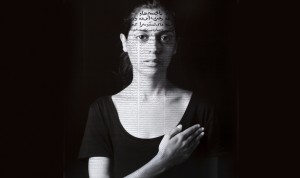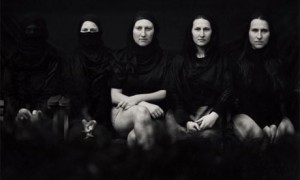 Hello.
Hello.
It’s me.
I was wondering if after all these years you’d like to think–that we are still pretty guilty of being racist.
Hi, my name is Gautam and I’ll be appearing on this blog throughout this year. I’ll usually try to keep it light and fun and hip and cool and relevant to however the kids these days like to do things around here, but today will be a little different.
Last week, a group that came to stock the East Campus Bridge’s walls with issues that were important to them in the context of the upcoming election came found slurs and malicious threats instead of the typical graffiti and events that you probably ignored. After documenting what was written and as (I’m assuming) fans of poetic justice, they quickly smothered the offending phrases with their own messages.
There is real hurt–individuals do feel unsafe inhabiting the same campus with those that think it is ok to use those words. It really is an injustice. But the question should not really be how we should react to achieve justice. Instead of looking for how we can get whoever painted those words to repent, we should look to making sure no one feels like it is ok to paint it in the first place. Instead of chasing the most obvious carrot hung in front of us by some sadist equestrian, we should buck the trend.
What I mean is that it is really easy to say that it was just one sociopath who just wanted to ruffle some feathers ( know, because that was my first reaction, too). So as a society, we took some advice from Patrick Star to take all the guilt and externalize it.

But this solves nothing. Individuals are still affected by the presence of hate speech, regardless of who takes the blame. Externalizing the guilt invites me and others to be complacent in saying, “I’m cool. Don’t look at me. I’m not racist. I didn’t write that. I love my one black friend. He says I’m cool, too.” It’s the bystander effect. It happens all the time, but do we want to accept that?
I think real justice will come in a form that will not be obvious to us. Equality should be so ingrained into society that we do not notice it: I’m a PC/Linux guy, but I have to give a lot of respect to Apple for their design. A friend recently swapped out his hard drive for a much faster solid state drive on his MacBook. It’s cool and hip and can load Facebook like 0.3x faster, but now it’s physically way off balance. We don’t realize that Apple expends a great deal of its resources to perfectly plan out the placement of the components and weight it so that it is even. And being a PC guy, I can tell you that DEFINITELY has not been the case for my laptops. We do not realize it because we are not supposed to. In an even world, we are not supposed to know that there is a design in place to compensate for inherent inequities.
Bringing it back, I think we will only know that justice was achieved when we do not have these kinds of incidents. We will only “solve” the problem when there is not an incident to react to. By pushing the blame away, we lose any pull to act, and without that, there is no reason for anybody to change, especially since hate is much easier in anonymity. We will continue chasing one measly carrot while carrying a deadweight for miles unless we buck it and find our own sustenance. Or just curb stomping that horse rider.
So the question becomes: “Since these incidents keep happening, how do we influence others to stop thinking that hate speech is ok?” or “How do we influence people to recognize hate speech as hate speech?” or “How do we influence people to practice not only tolerance but understanding?”
On the flip-side, we know that there are individuals that truly lack empathy. Should we change our behavior depending on where it came from?
http://www.thedailybeast.com/articles/2013/06/25/how-to-spot-a-sociopath-hint-it-could-be-you.html




 Is circumcision of young boys an affront on their bodily rights?
Is circumcision of young boys an affront on their bodily rights?